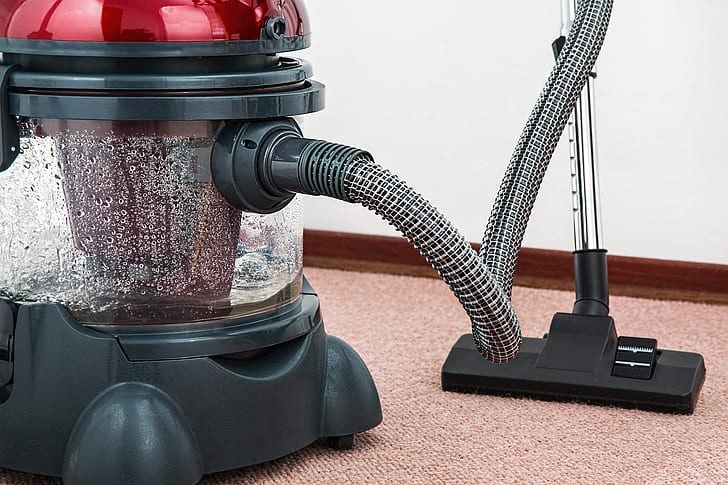A kitchen hood plays a pivotal role in maintaining a clean, safe, and comfortable cooking environment. It helps to eliminate smoke, odors, and grease, ensuring better air quality and preventing potential health hazards. In this blog, we'll provide you with a comprehensive guide to assist you in selecting the perfect kitchen hood to meet your specific needs and preferences.
Understanding Kitchen Hoods
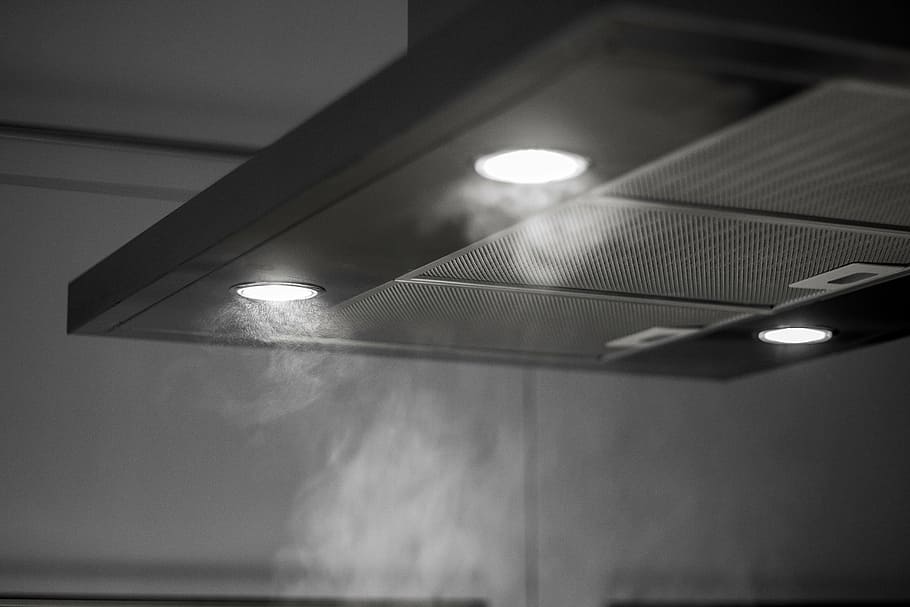
A kitchen hood, also known as a range hood or exhaust hood, is an essential appliance in your kitchen designed to remove airborne pollutants generated during cooking. It is typically installed above your stove or cooktop, where it captures and expels unwanted particles and gases.
The primary functions of a kitchen hood are ventilation, odor removal, and smoke extraction. When you cook, various contaminants are released into the air, including smoke, steam, grease, and cooking odors. A kitchen hood addresses these issues by:
- Ventilation: Kitchen hoods contain a fan that draws in the air from your cooking area. This air is then filtered and exhausted outside or recirculated after purification. Ventilation helps maintain a fresh and comfortable kitchen environment by removing heat and excess moisture.
- Odor Removal: Cooking odors can linger in your home, making it less pleasant. Kitchen hoods efficiently capture and eliminate these odors, ensuring that your kitchen smells fresh even after preparing aromatic dishes.
- Smoke Extraction: Whether you're grilling, frying, or sautéing, smoke is often produced. A kitchen hood effectively removes smoke, preventing it from spreading throughout your home and potentially triggering smoke detectors.
Kitchen hoods come by various names, including range hoods, exhaust hoods, and cooker hoods, depending on the region or specific terminology. Regardless of the name, they all serve the same crucial purpose: enhancing your cooking experience by maintaining air quality and minimizing the negative side effects of cooking. Understanding the role and functions of a kitchen hood is the first step in choosing the perfect one for your kitchen.
Types of Kitchen Hoods
When it comes to kitchen hoods, there is a wide range of options available to suit various kitchen layouts and design preferences. Understanding the different types of kitchen hoods can help you choose the one that best fits your needs. Here are four common types:
Wall-Mounted Kitchen Hoods
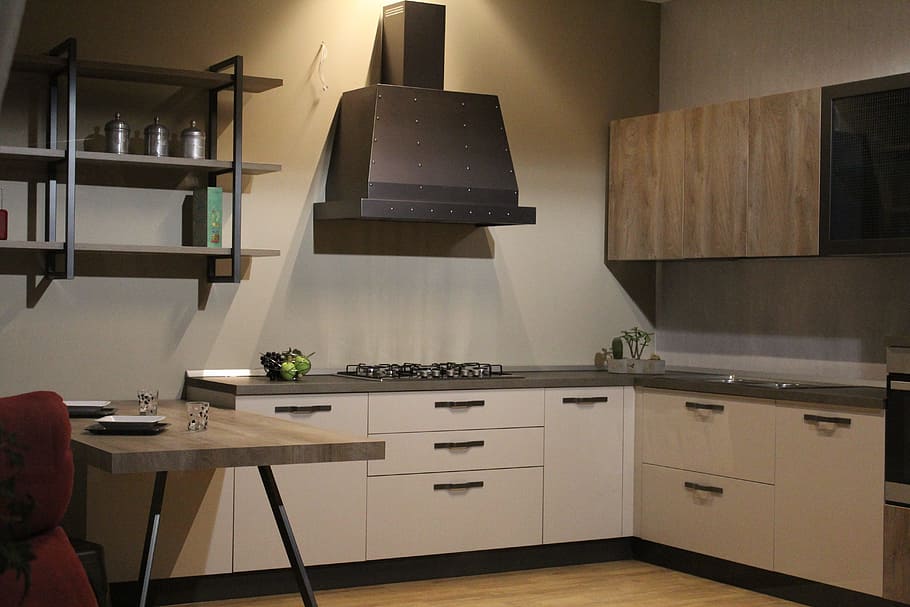
- Wall-mounted kitchen hoods, as the name suggests, are attached to the wall above your cooking range or stove.
- They are a popular choice for kitchens with a stove positioned against a wall.
- These hoods are typically larger and provide effective ventilation for cooking areas along a wall.
- Wall-mounted hoods come in various styles and designs, allowing you to match them with your kitchen decor.
Under-Cabinet Kitchen Hoods
- Under-cabinet hoods are installed beneath kitchen cabinets above the cooking surface.
- They are a space-saving option and ideal for kitchens with limited space between the stove and the cabinets.
- These hoods are discreet and do not obstruct the view of your kitchen, making them a seamless addition to your cabinetry.
Kitchen Island Hoods
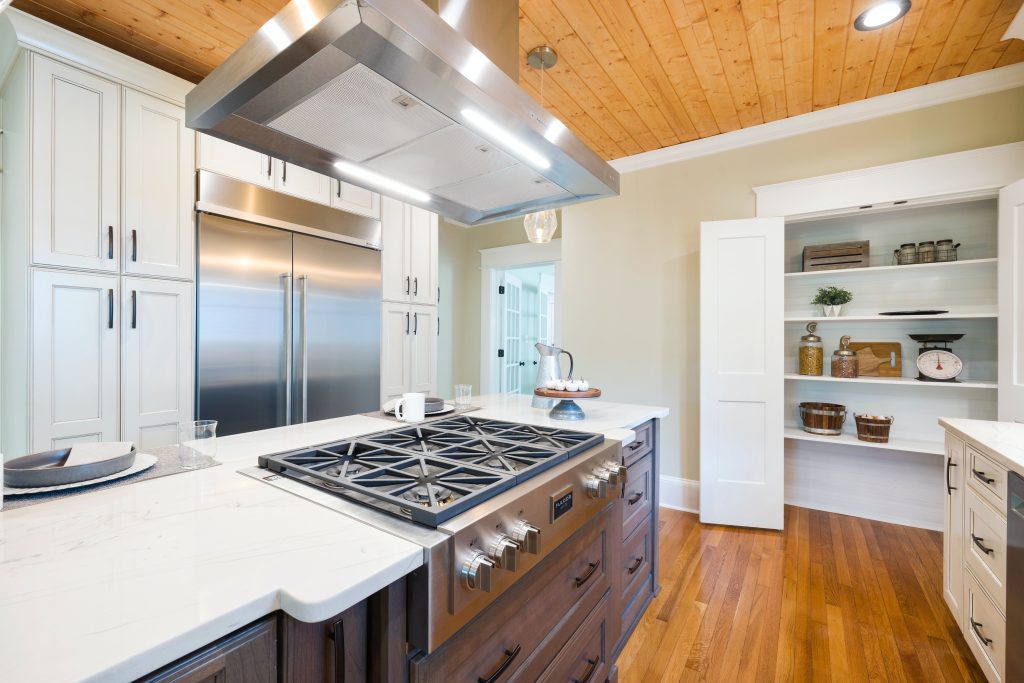
- Kitchen island hoods are designed for kitchens with cooking ranges located on an island or in an open space.
- They are suspended from the ceiling and positioned directly above the cooktop on the island.
- Island hoods offer both functionality and a visually striking design element, often becoming a focal point in the kitchen.
- They provide efficient ventilation for open-concept kitchen layouts.
Downdraft Hoods
- Downdraft hoods are a unique option that is installed directly behind or alongside the cooktop.
- These hoods remain hidden when not in use and rise up or extend when cooking, creating a venting system.
- Downdraft hoods are an excellent choice for kitchens where traditional overhead hoods are not feasible or aesthetically preferred.
- They are commonly used in kitchen islands or in minimalist kitchen designs.
Sizing and Capacity
Choosing the correct size for your kitchen hood is crucial for its effectiveness. To do so, follow these steps:
- Measure Your Cooktop or Range: Begin by measuring the width of your cooking surface. The width of the hood should ideally match or slightly exceed the width of your stove or cooktop.
- Calculate the CFM: Cubic Feet per Minute (CFM) is a measure of the hood's airflow capacity. To determine the required CFM for your kitchen, calculate the volume of your kitchen space. Multiply the kitchen's length, width, and height in feet, and then divide by 4. This gives you a rough estimate of the minimum CFM required.
- Adjust for Cooking Style: If you do a lot of high-heat cooking, such as frying or grilling, consider adding 100 CFM for every 10,000 BTUs (British Thermal Units) your cooktop generates.
Matching the Kitchen Hood's Capacity with Your Cooking Range
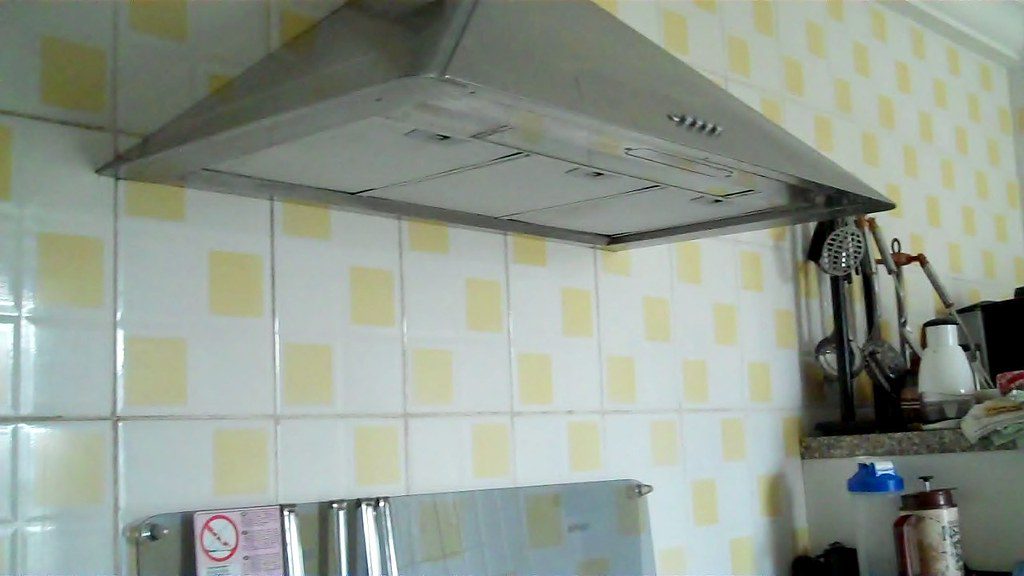
It's essential to match the hood's capacity (CFM) with your cooking range to ensure effective ventilation. Here's why it matters:
- Smoke and Odor Removal: If your hood's CFM is too low for your cooking range, it may struggle to remove smoke, steam, and odors effectively. This can lead to lingering cooking smells and poor air quality in your kitchen.
- Grease and Moisture Control: A properly sized hood efficiently captures grease and moisture, preventing them from settling on your kitchen surfaces or causing damage over time.
- Noise Levels: An oversized hood may produce more noise than necessary, while an undersized hood might need to run at higher speeds, also increasing noise levels. Matching the capacity helps maintain an optimal balance between performance and noise.
Ventilation Power and CFM
CFM, or Cubic Feet per Minute, is a unit of measurement used to quantify the volume of air that a kitchen hood can move or ventilate in one minute. It is a critical specification for kitchen hoods, as it directly affects their performance in removing smoke, odors, and airborne contaminants.
The significance of CFM lies in its ability to determine how effectively a kitchen hood can clear the air in your cooking space. Higher CFM values indicate greater airflow capacity, which is essential for efficient ventilation.
A kitchen hood with the appropriate CFM rating ensures that it can keep up with the demands of your cooking, maintain air quality, and prevent the accumulation of moisture, odors, and grease.
How to Calculate the Required CFM for Your Kitchen
To calculate the required CFM for your kitchen, follow these steps:
- Measure Kitchen Volume: Measure the length, width, and height of your kitchen space in feet.
- Calculate Kitchen Volume: Multiply these measurements together to determine the volume of your kitchen in cubic feet.
- Divide by 4: Divide the kitchen volume by 4. This provides a rough estimate of the minimum CFM required for adequate ventilation.
- Adjust for Cooking Style: If you frequently cook with high heat, such as grilling or frying, consider adding 100 CFM for every 10,000 BTUs generated by your cooking appliance.
Calculating the required CFM ensures that your kitchen hood can effectively remove cooking byproducts, maintain air quality, and create a comfortable cooking environment.
Kitchen Hood Styles and Aesthetics
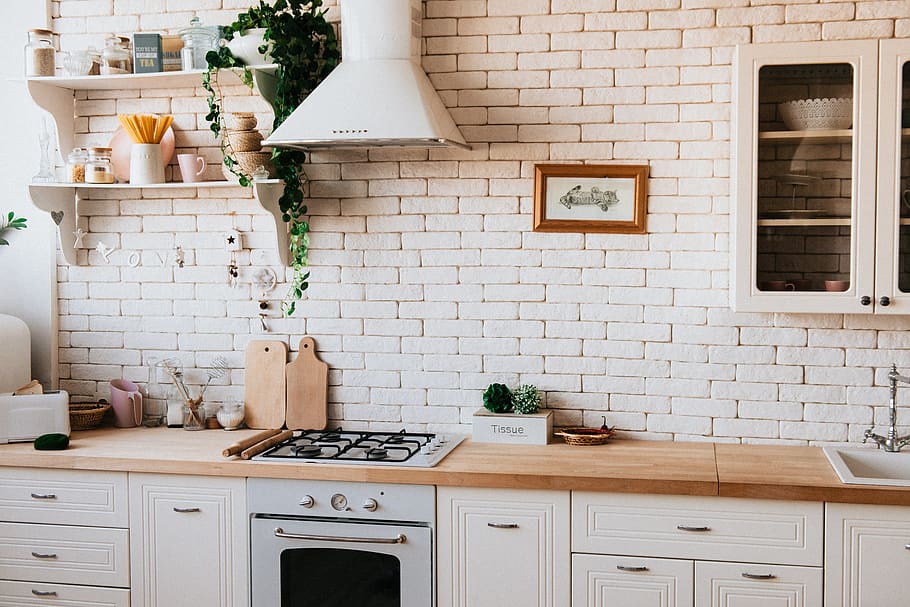
Various Kitchen Hood Styles
- Contemporary: Contemporary kitchen hoods often feature sleek lines, minimalist designs, and stainless steel or glass finishes. They are perfect for modern and cutting-edge kitchen spaces.
- Traditional: Traditional hoods have a classic and timeless appeal, typically featuring ornate details, wood or decorative metal, and a more elegant design. They suit kitchens with a traditional or vintage look.
- Modern: Modern kitchen hoods emphasize simplicity and functionality. They often have clean lines, geometric shapes, and a focus on practicality. These hoods are versatile and can complement a variety of kitchen designs.
- Custom: Custom kitchen hoods allow you to create a unique focal point in your kitchen. You can choose materials, shapes, and finishes to match your specific design preferences.
Choosing a Style that Complements Your Kitchen's Design
- Consider the Overall Kitchen Design: Your hood should harmonize with your kitchen's existing design elements, including cabinetry, countertops, and appliances. Ensure that the style you choose complements the overall aesthetic.
- Match Materials: Select materials for your hood that align with the materials used elsewhere in your kitchen. For example, if you have wooden cabinetry, a wooden or wood-accented hood might be a great choice.
- Balance with Size: The size of your kitchen hood should be proportionate to the size of your cooking area. It should not overwhelm or get lost in the space.
- Personal Taste: Ultimately, your choice should reflect your personal taste and preferences. The hood should resonate with your style and create a cohesive and visually pleasing kitchen environment.
Features and Technology
Variable Speed Fans: Many modern kitchen hoods come equipped with variable speed fans that allow you to adjust the ventilation power based on your cooking needs. This feature not only helps save energy but also reduces noise levels when you're not cooking intensely.
LED Lighting: LED lighting is a popular feature in kitchen hoods, providing bright and energy-efficient illumination over your cooking area. It enhances visibility while you cook and adds a stylish touch to your kitchen.
Noise Reduction Technology: To create a quieter cooking environment, some hoods incorporate noise reduction technology, such as sound-absorbing materials and quiet fan motors. This ensures efficient ventilation with minimal disturbance.
By considering factors like type, size, capacity, style, and advanced features, you can enhance both the functionality and aesthetics of your kitchen while enjoying the benefits of efficient ventilation.

